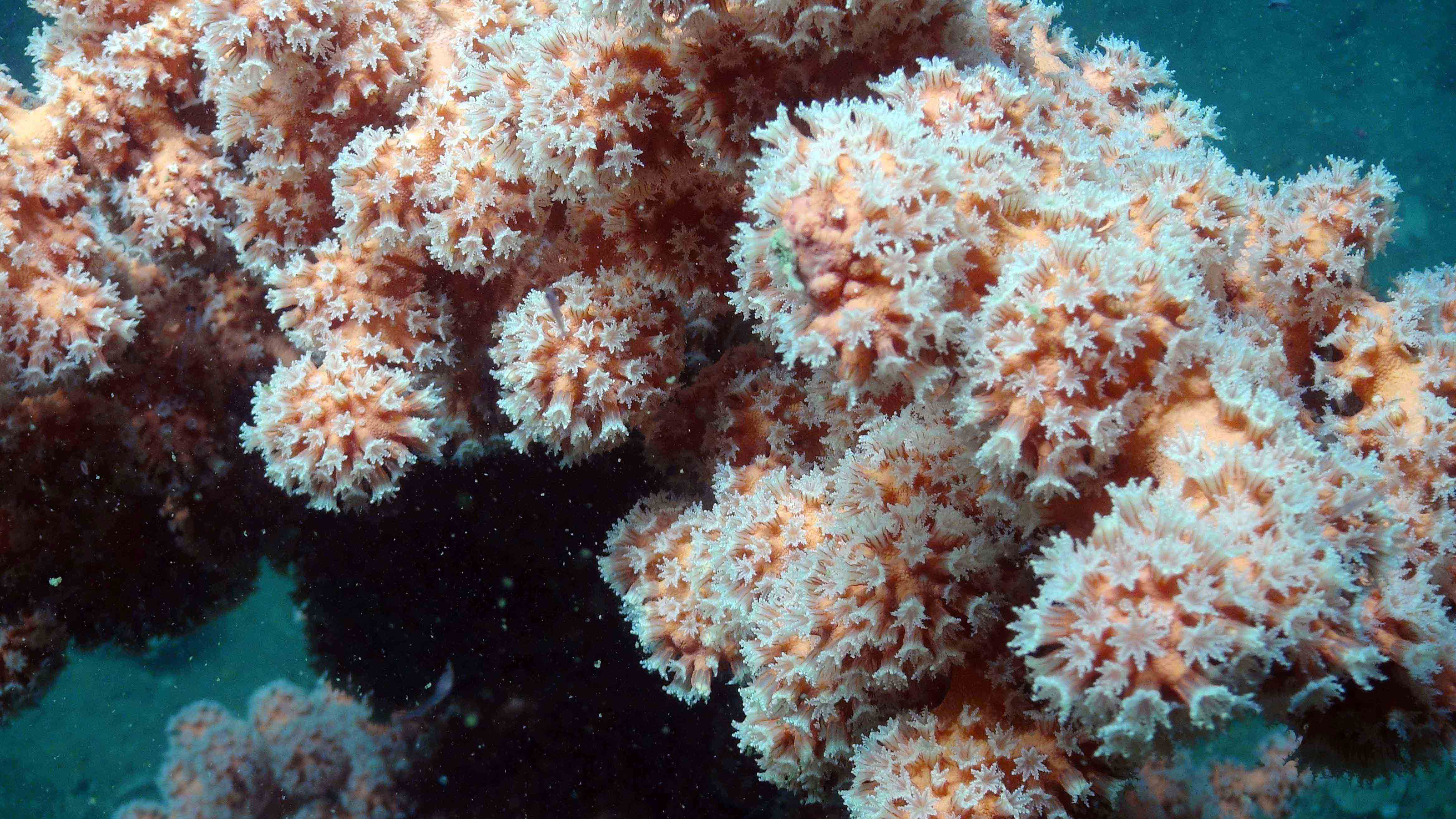Decision Time for Deep Corals in the Mid-Atlantic
 © NOAA Okeanos Explorer program, Bureau of Ocean Energy Management, and U.S. Geological Survey
© NOAA Okeanos Explorer program, Bureau of Ocean Energy Management, and U.S. Geological SurveyGiant paragorgia coral in Norfolk Canyon.
On June 10, regional fisheries officials will have the chance to create the largest protected area in U.S. Atlantic waters when they vote on a proposal to help preserve deep-sea corals and the unique habitat these animals create.
When members of the Mid-Atlantic Fishery Management Council meet in Virginia Beach, Virginia, they will be about 70 miles from one of the many undersea canyons that cut into the edge of the continental shelf. Scientists have discovered fantastic but fragile corals growing in and around these canyons along the Atlantic coast.
These places are often not far offshore from major cities of the Eastern Seaboard, but images captured during explorations offer glimpses into another world. Sea spiders crawl among bubblegum coral, and long-nosed chimera—ghost sharks—glide above. The cameras of robotic submersibles have also documented commercially important species such as monkfish, squid, and swordfish using these deep-sea habitats.
Sadly, scientists have also seen what happens to these unique life-forms when they are struck by damaging forms of fishing gear. Coral gardens are reduced to lifeless rubble by contact with bottom trawls. They might look like stone, but coral structures break easily and grow very slowly. Some deep-sea corals are among the oldest known animals and can live for centuries.
The council members have recognized the need to use their power under federal law to protect these unique life-forms by making the canyons and a wide swath of the seafloor safe from fishing gear that scrapes along the bottom. The idea has support from conservation groups, stakeholders in the fishing industry, and the more than 100,000 people who weighed in during a public comment period.
Although the council has agreed in principle that action is needed, the exact size of the protected area is still to be determined. If officials choose the largest area under consideration, they could safeguard more than 39,000 square miles of seabed and canyons—that’s nearly the size of Virginia.
Such a large area also would extend an important network of deep-sea coral protections along the Atlantic coast. The three fishery management councils whose territory spans the coastline signed an agreement in 2013 to work to keep deep corals intact. The South Atlantic council had acted in 2010, creating habitat areas for deep corals that stretch from the tip of Florida to just east of North Carolina’s Outer Banks. An ambitious move by mid-Atlantic officials could protect corals from Virginia to New York and set the stage for New England to protect corals in the Northeast, including newly discovered coral gardens in the Gulf of Maine that amazed scientists with their size and age.
I urge council members to seize this opportunity to create a conservation legacy they can be proud of.
Peter Baker directs ocean conservation in the northeastern U.S. for The Pew Charitable Trusts.


Top 10 Corals and Creatures in Mid-Atlantic’s ‘Deep-Sea Backyard’


This video is hosted by YouTube. In order to view it, you must consent to the use of “Marketing Cookies” by updating your preferences in the Cookie Settings link below. View on YouTube
This video is hosted by YouTube. In order to view it, you must consent to the use of “Marketing Cookies” by updating your preferences in the Cookie Settings link below. View on YouTube









